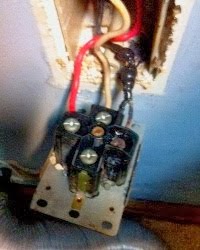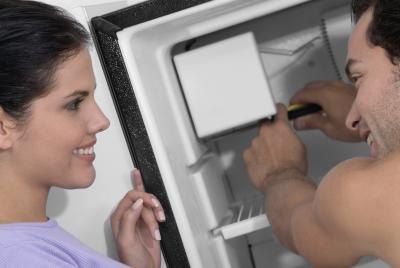Tips on How to Take Care Appliances, Easy & Practical
Caring for household appliances is an activity that is easy bother. Difficult and sometimes even activities that could be annoying if we do not know how but it will be easy and practical when we know how to care for home appliances right. Therefore this time we will give you tips about how to clean household appliances.
How to Remove Stains on the Wall / Wallpaper
One of the annoying stains and making confused how clean it is dirty stain on the wall / wallpaper, stain is common on the bottom wall or wallpaper for dirty old shoe attached, former flooded and dirty water splashes or soil. and how to eliminate the unpleasant sights? with household appliances become easy, the way is to mix cornstarch with water, stir once in you can start to clean it with water the cornstarch mixture, rubbing the walls or wallpaper with a toothbrush and a more powerful is with pure baking soda, yap like to cook but baking soda or baking soda is pure pure that you can get at various supermarkets.
How to clean the glass window
Glass is a material that is in many household appliances and when it will dull very unsightly, and how to clean the glass material that is easy and practical? again not difficult, you can use household appliances around the house. The trick is to prepare a bottle of face tonic that you normally use to freshen your face after wearing makeup and old newspapers, just pour a few drops of tonic and wiped his face wearing old newspapers, you can restore the luster of glass housewares you with an easy and practical.
How to Clean Bath
The tub is one of the fast housewares dirty, can occur because of hard water deposits or soap remnants that are not affordable to be cleaned. Easy to clean, just with pure baking soda mixed with water and pour evenly gets dirty and start scrubbing with a toothbrush or a material such as a towel, if you do not have a pure baking soda can also use regular soap you use to wash dishes and brush secondhand gear to reach the corners that are difficult to achieve.
How to Eliminate Odor In Fridge
Deodorize refrigerators can in many ways, but there is a very practical way, by putting pure baking soda into the fridge, put to use open container or that have small holes that will be useful as the odor towing, no need to worry, pure baking soda is a safe material because it is pure ingredients to make the cake really. To further eliminate odors ice cupboard you can also routinely clean the contents of the fridge, do not have rotting food in the refrigerator or open canned food, canned food should be fed into a strong plastic that is tied, such as cat food or corned beef.
How to Remove Stains on the Wall / Wallpaper
One of the annoying stains and making confused how clean it is dirty stain on the wall / wallpaper, stain is common on the bottom wall or wallpaper for dirty old shoe attached, former flooded and dirty water splashes or soil. and how to eliminate the unpleasant sights? with household appliances become easy, the way is to mix cornstarch with water, stir once in you can start to clean it with water the cornstarch mixture, rubbing the walls or wallpaper with a toothbrush and a more powerful is with pure baking soda, yap like to cook but baking soda or baking soda is pure pure that you can get at various supermarkets.
How to clean the glass window
Glass is a material that is in many household appliances and when it will dull very unsightly, and how to clean the glass material that is easy and practical? again not difficult, you can use household appliances around the house. The trick is to prepare a bottle of face tonic that you normally use to freshen your face after wearing makeup and old newspapers, just pour a few drops of tonic and wiped his face wearing old newspapers, you can restore the luster of glass housewares you with an easy and practical.
How to Clean Bath
The tub is one of the fast housewares dirty, can occur because of hard water deposits or soap remnants that are not affordable to be cleaned. Easy to clean, just with pure baking soda mixed with water and pour evenly gets dirty and start scrubbing with a toothbrush or a material such as a towel, if you do not have a pure baking soda can also use regular soap you use to wash dishes and brush secondhand gear to reach the corners that are difficult to achieve.
How to Eliminate Odor In Fridge
Deodorize refrigerators can in many ways, but there is a very practical way, by putting pure baking soda into the fridge, put to use open container or that have small holes that will be useful as the odor towing, no need to worry, pure baking soda is a safe material because it is pure ingredients to make the cake really. To further eliminate odors ice cupboard you can also routinely clean the contents of the fridge, do not have rotting food in the refrigerator or open canned food, canned food should be fed into a strong plastic that is tied, such as cat food or corned beef.

































